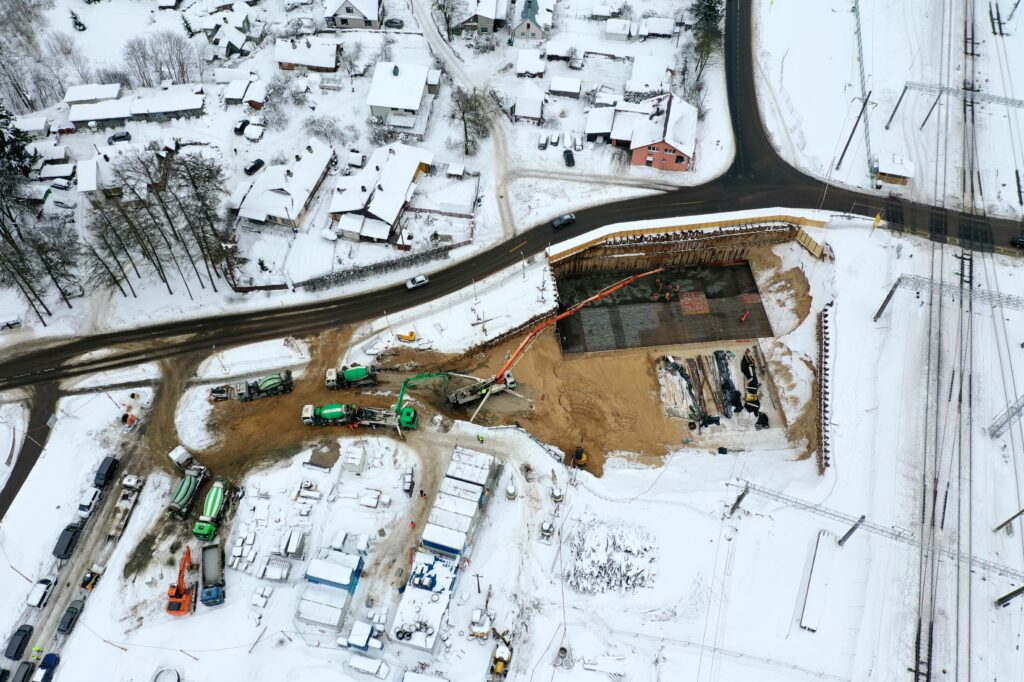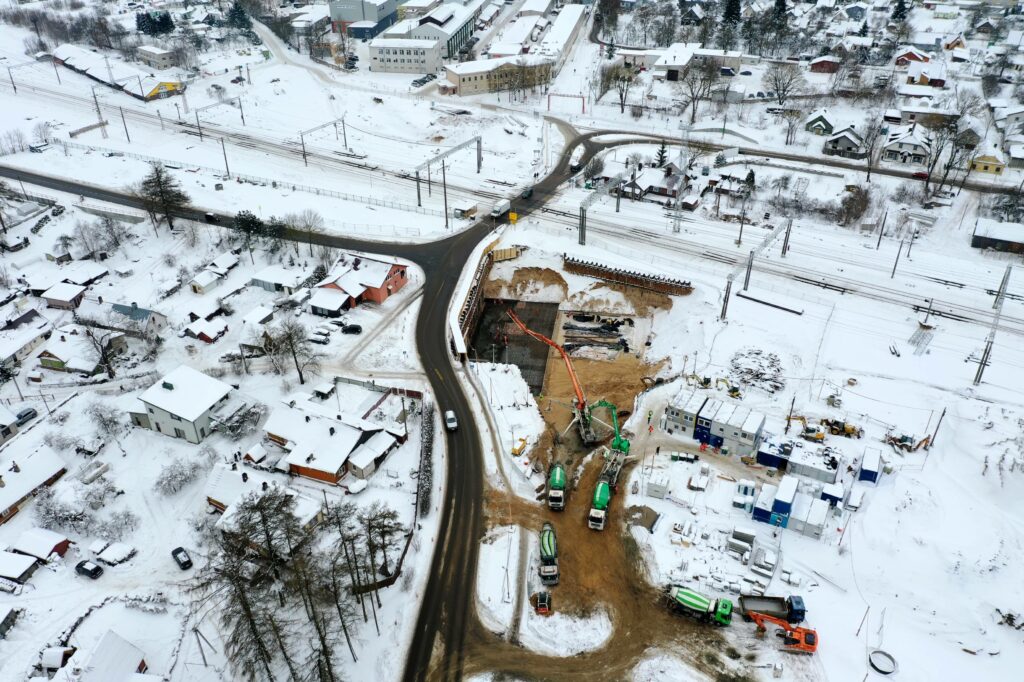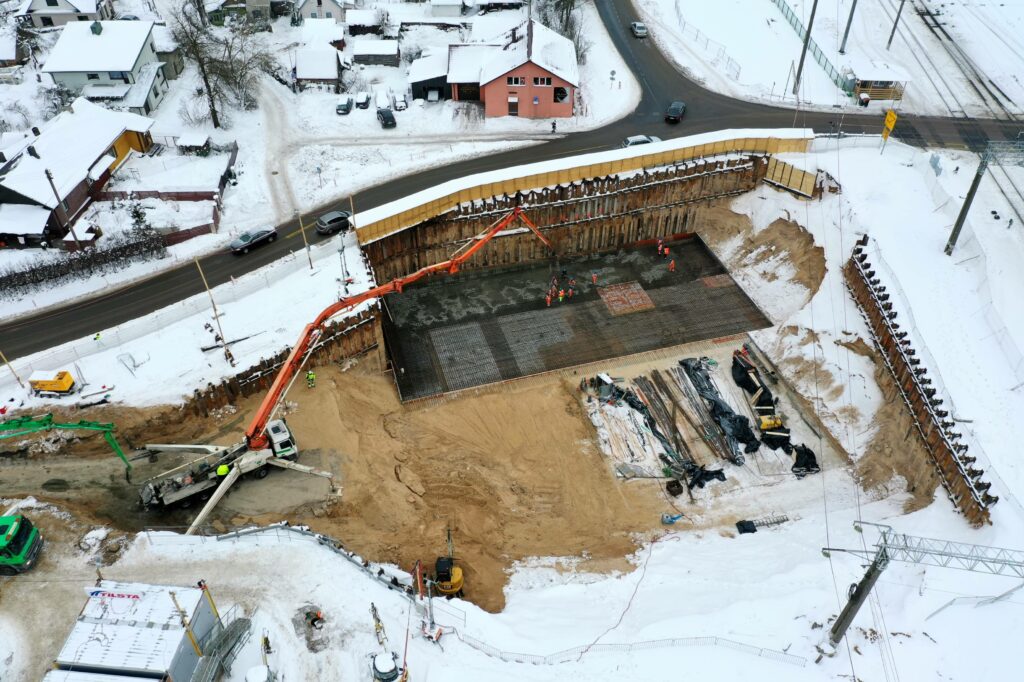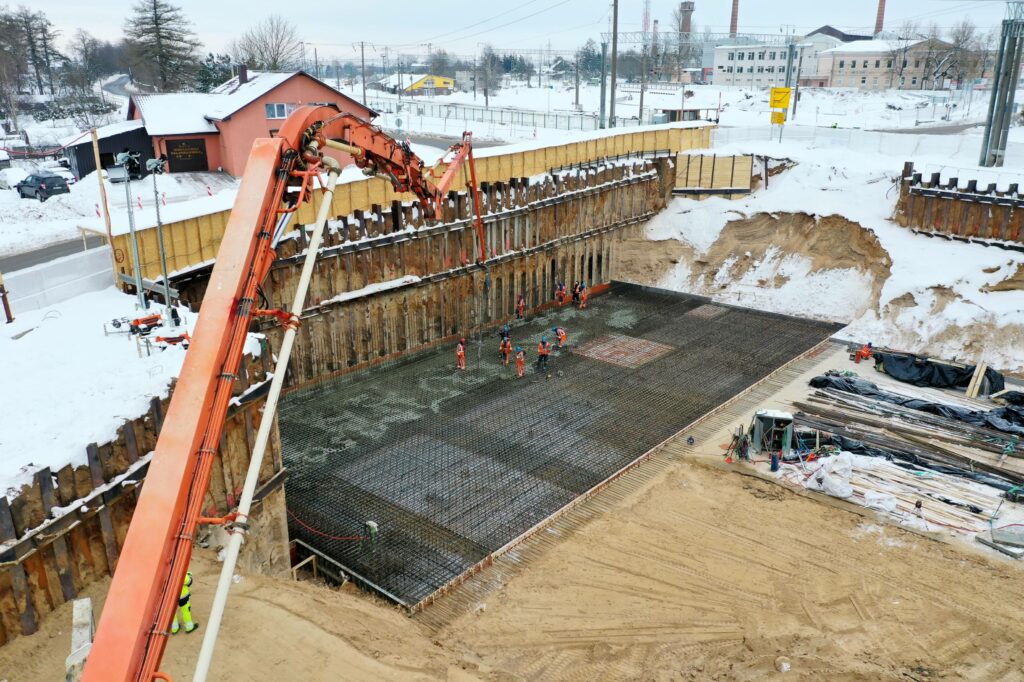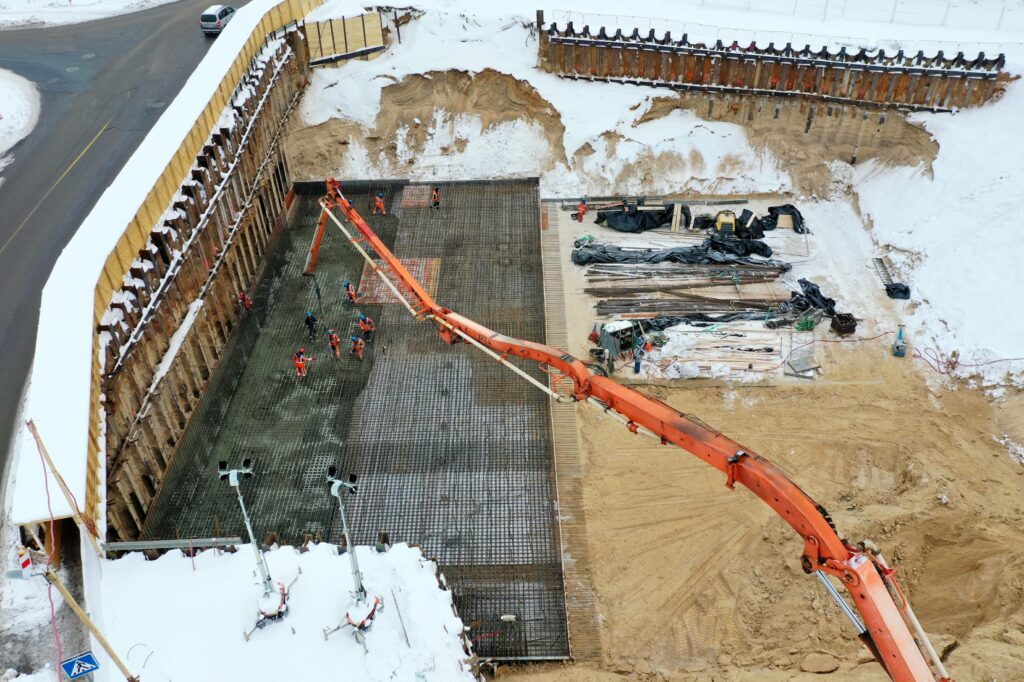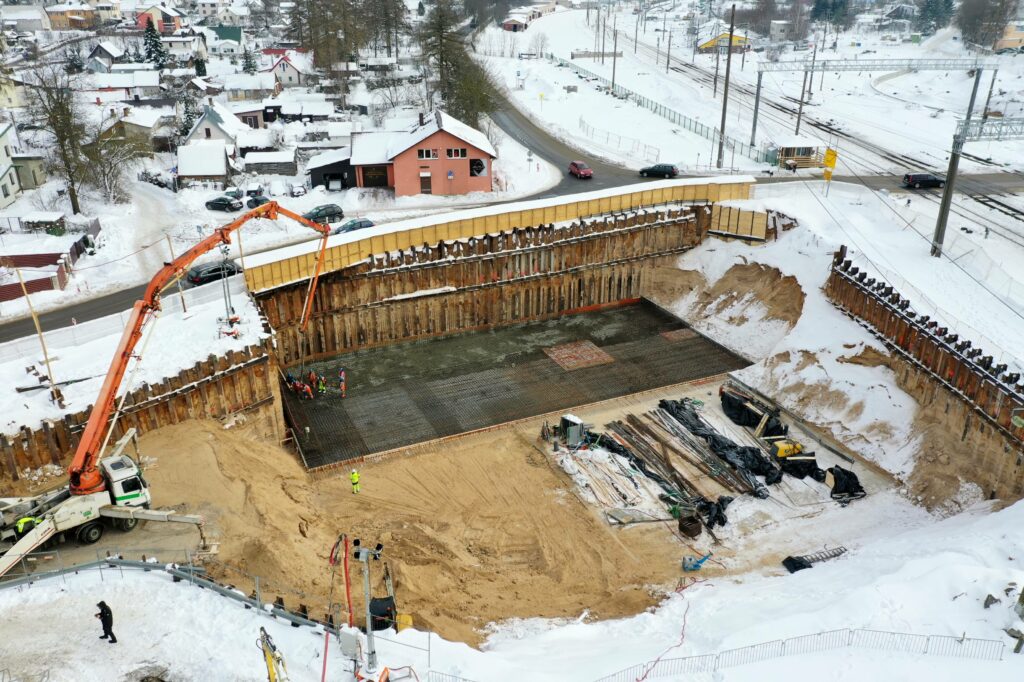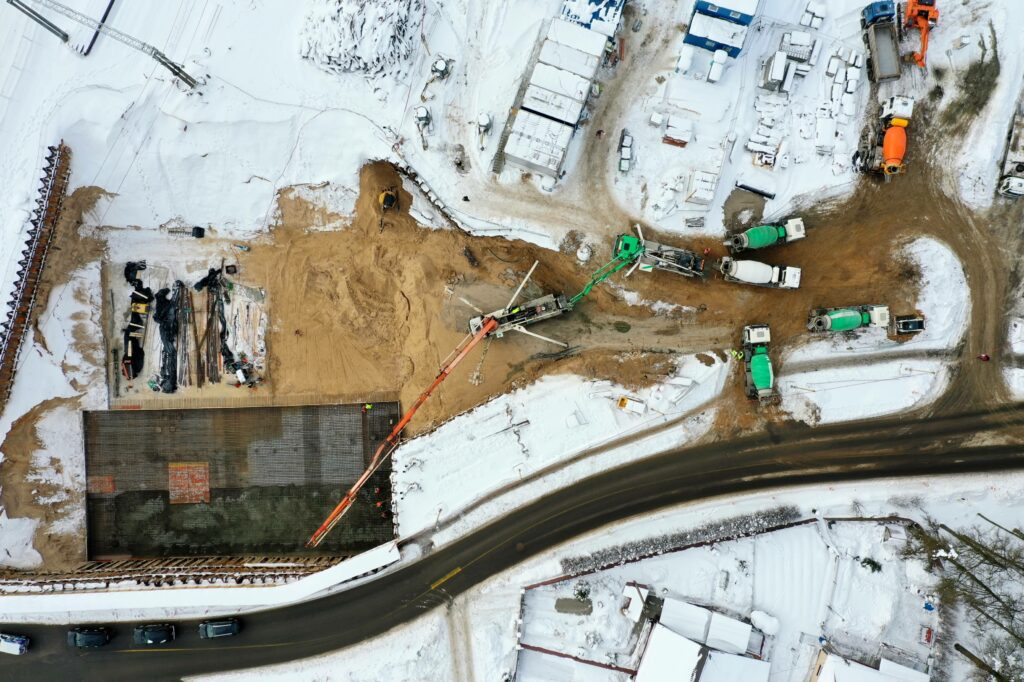The transport artery connecting Vilnius with Lentvari and Trakai will become much more convenient. The Lentvaris railway crossing reconstruction works will be continued in March. The project, the need for which has been talked about for decades, will use Italian technology, which has not yet been applied in Lithuania. Instead of the crossing, where drivers had to wait up to 40 minutes, the two parts of the city will be connected by a tunnel. The works are planned to be completed in autumn.
The settlement of Lentvaris is divided in half by the international railway. For many years, this caused a lot of inconvenience both to the residents of the city and to those passing through it. Cars had to park and wait up to 40 minutes at the crossing. The need to rebuild this crossing has been talked about for almost 30 years.
The crossing barriers came down very often and the trains often passed one after the other, so the stopped drivers had to waste a lot of time. Many people from Trakai district cross the crossing every day - they go to work, take their children to school.
According to Remigijaus Lipkevičius, director of the Lithuanian Motorway Directorate (LAKD), which is implementing the project, this crossing is one of the largest non-reconstructed single-level railway crossings in the Baltic States.
"This is a project of great importance, the implementation of which will improve the communication not only of residents, but also of such important institutions as firefighters and doctors, for whom every minute is often important. It will be safer to cross the railway both by car and on foot, and the queues where people wasted their time will become history," R. Lipkevičius assured.
The construction company "Tilsta" is reconstructing the railway crossing and installing a tunnel for cars. The total value of the works amounts to 20,7 million. euros.
Preparation took time
The necessity of reconstruction of the crossing began to be discussed more seriously ten years ago. According to Trakai district mayor Edita Rudelienė, the project is of national, not local, significance. For a long time, the central government and local governments differed over the crossing. The problem was assessed differently by both the changing authorities and "Lithuanian railways", and JV LAKD.
"For a long time, the aim was to harmonize the positions of three institutions - Trakai District Municipality, "Lietuvos Geležinkelių" and VĮ LAKD. There was a debate as to who would bear the greatest responsibility. Funds from the European Union were also needed to implement the crossing reconstruction project," says the mayor.
Before starting the project, a study was conducted to find out which crossing reconstruction option is the most suitable. The study took into account the relief, plot boundaries, existing streets, engineering networks and structures. According to the representatives of the municipality of Trakai district, 15-20 years ago, various technical solutions were considered, including the viaduct. However, with the development of technology, a more advanced method appeared - it was decided to install a tunnel.
The main challenge of the project is to implement it in such a way that train traffic is not stopped, because this railway section is very important, connecting Vilnius with both Warsaw and Kaliningrad.
Will apply for the first time
The reconstruction work started in September last year. At the moment, the technological break has been announced - only the assembly works of the underground tunnel are currently being carried out, and the main works are planned to resume in March. Construction works from December 15. until March 15 not implemented in all projects implemented by LAKD.
According to Ernesto Stonys, the project manager of the contractor UAB Tilsta, part of the necessary communication infrastructure has already been installed - a parking lot at the underground railway crossing and a temporary road on Dzūkų street, a temporary road on Klevų avenue, a large part of the engineering networks (domestic and rainwater) has been moved , water supply, gas pipeline, communication networks). A part of supporting wall structures has also been installed.
In the northern part of the city, at the crossing, there is a construction site where the frame construction elements of the tunnel are manufactured. It is planned that these elements will be pushed to the design position after the technological break.
"For the construction of the tunnel, the technology will be used for the first time in Lithuania, when the tunnel structures are pushed without interrupting the train traffic. First, a system of temporary supporting structures "Verona" is installed under the railway. After its installation, two elements of the tunnel will be pushed into the design position with the help of special jacks.
At the same time, soil is dug and removed from inside the tunnel in parallel. Pushing the tunnel elements does not stop train traffic, but only reduces their speed. "Verona" system is dismantled after the tunnel is pushed in, said E. Stonys about the tunnel construction technology.
This type of patented technology is widely used in the world. The Italian partners of the contractor UAB "Tilsta" have equipped about 1000 objects using it. For the first time in the Baltic States, this technology is applied in the city of Tartu in Estonia, where the construction of a pedestrian tunnel, three times smaller than the future one in Lentvary, began last year. In Lithuania, the project is implemented in this way for the first time.
Traffic restrictions are expected
The crossing is scheduled to be closed in March, the exact date will be announced to the public as soon as it is known. Car traffic will be stopped on Vokės st. (from Kęstutis st. to the ring), Geležinkelio st. (from Pakalnė St. to Ring), Fabriko St. (from Sodų st. to the ring). Pedestrians will be able to cross the railway through the existing pedestrian tunnel at the train station.
A new parking lot has been installed on Dzūkų Street, where residents will be able to leave their cars and go through the underground passage to the railway of the station. On the other side, in order to cross the railway, residents will be able to leave their vehicles at the shopping center "Maxima".
The project contractor UAB "Tilsta" is also committed to hiring transport to take children to educational institutions, because after the crossing is closed, parents will not have the opportunity to drive from one side of the city to the other. The service will be provided to children attending nursery schools "Šilas", "Svajonėlė", Lentvaris primary school, Henrikos Senkevičiaus high school, Motiejas Šimelionis high school and "Versmės" high school.
According to the contract, the reconstruction of the crossing and the construction of the tunnel are scheduled to be completed by September of this year.

